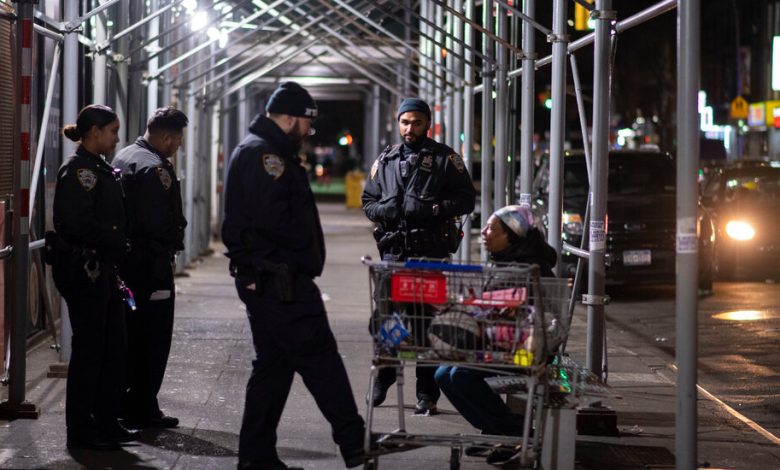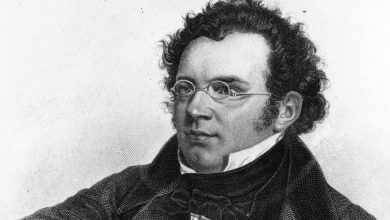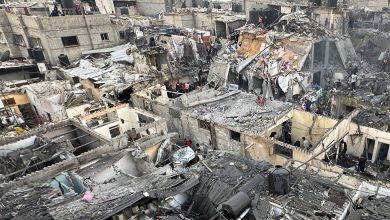On City Streets, Fear and Hope as Mayor Launches Push To Remove Mentally Ill

It was after dark on Tuesday in Washington Square Park in Manhattan, when Meeka Brown, 48, learned that Mayor Eric Adams had announced a citywide push for authorities to remove people with severe, untreated mental illness from New York’s streets and subways — even against their will, and even if they are not a threat to others.
“I’m one,” said Ms. Brown, who said she is schizophrenic and also suffers from a psychotic disorder. “My mental state is being taken care of because it’s well-medicated; I try to keep it in control and don’t let it control me.” She was seated on a park bench. As she spoke, a man passed by her in the dark, gesticulating wildly.
Ms. Brown was torn as she digested the mayor’s new policy. Officials in New York said it would require the involuntary hospitalization of people deemed too mentally ill to care for themselves.
Were she to spiral, Ms. Brown said she feared the city’s new marching orders could make her, a Black woman, a police target. “I’m scared that now I am going to be scared of that,” she said.
And yet, Ms. Brown credited the three times in the past that police took her off the street and involuntarily committed her to a psychiatric ward, for her current mental stability. “The stigma is that psych wards are bad,” she said. “They are not. They care.”
On and under the streets of the city on Tuesday night, men and women who face homelessness and mental illness digested the news with worry for themselves and their peers, and a measure of hope that a new approach would make the city, and their lives, safer.
Transportation in New York City
- Subway Safety: How safe is the New York City subway these days? We asked more than two dozen people who spend the most time in and around the system for their thoughts.
- Taxi Fare Hike: The city’s Taxi and Limousine Commission voted to increase fares for the first time in 10 years, bringing the cost of the average taxi ride up by 23 percent.
- Congestion Pricing: It could soon cost $23 to drive through Manhattan as the city moves toward introducing a tolling program to reduce traffic, but Gov. Philip D. Murphy of New Jersey is seeking to slow the effort.
- Penn Station: New York State officials have approved a sweeping redevelopment of Midtown Manhattan that would transform Pennsylvania Station. This is what it could mean for New Yorkers.
About 3,400 people were living in streets and subways in January, according to the city’s annual estimate, criticized by some as a vast undercount. Studies have shown that a large majority of unsheltered New Yorkers have mental illness or other severe health problems, and a series of random street attacks over the course of the pandemic has punctured the city’s sense of safety.
Earlier this month, Jumaane Williams, the city’s public advocate, released a report criticizing the mayor’s efforts to help New Yorkers with serious mental illness. Programs for them have shrunk, the public advocate said, and Mr. Adams has demonstrated an overreliance on police.
On Tuesday night, in a subway station in the Kingsbridge section of the Bronx, Diane Borsey, 66, said she has been subjected to violence by other people like her who are unhoused, but also from police officers. Under the new policy, she feared officers would have “too much power.”
But others, like Michael McLurkin, 47, who goes by Quest, and has slept on the streets of Harlem for the past two months, approved of the mayor’s plan as a much-needed initiative to tackle the dangerous situations he faces each night.
“It’s violent people out here,” Mr. McLurkin said as he stood outside the Harlem 125th Street station of the Metro-North Railroad. “If people need that kind of support, it would be creative.”
Outside of Pennsylvania Station, Stephen Gomes, 50, stood beside a shopping cart full of his belongings — an assortment of bags, a plastic cup from Starbucks, loose change and a pair of gloves. He agreed.
“All the stuff that’s been happening in our society, I think it’s pretty warranted,” he said of the new directive. “All the mental facilities seem to have been closed, and a lot of the mentally ill seem to be displaced within the homeless society. So what are you going to do? Send the police to take them in,” Mr. Gomes said.
In Washington Square Park, a group of people shared a bottle of brown liquor on a bench. A few of them spoke aloud to themselves. One man rocked quietly.
“It is a double-edged sword, because yes, they need help, and it is hard for them to get help out here, but you don’t just because they seem crazy start putting them away,” said a truck driver who said he has a home, but spends his evenings with a community he described as “street” in the park.
In New York City, homelessness disproportionately affects Black people, according to the Coalition for the Homeless, an advocacy organization. The truck driver, who declined to share his name, said he was concerned that increased interaction with police could be deadly for the street’s mentally ill Black people.
“I thought they wanted to have some kind of advocacy to deal with mentally ill people,” he said. “I thought that is what they were supposed to be doing. You want to sic more police on mentally ill people?”
On 125th Street, outside the Metro-North station, Mr. McLurkin smoked a cigarette and thought about the new policy’s implications. Although he has had a past diagnosis of mental illness, he did not feel he was at risk.
“They may have power over others but they cannot take me away,” Mr. McLurkin said. “No one can take my spirit and joy and pride.”
Liset Cruz, Téa Kvetenadze, Sasha von Oldershausen and Brittany Kriegstein contributed reporting.





